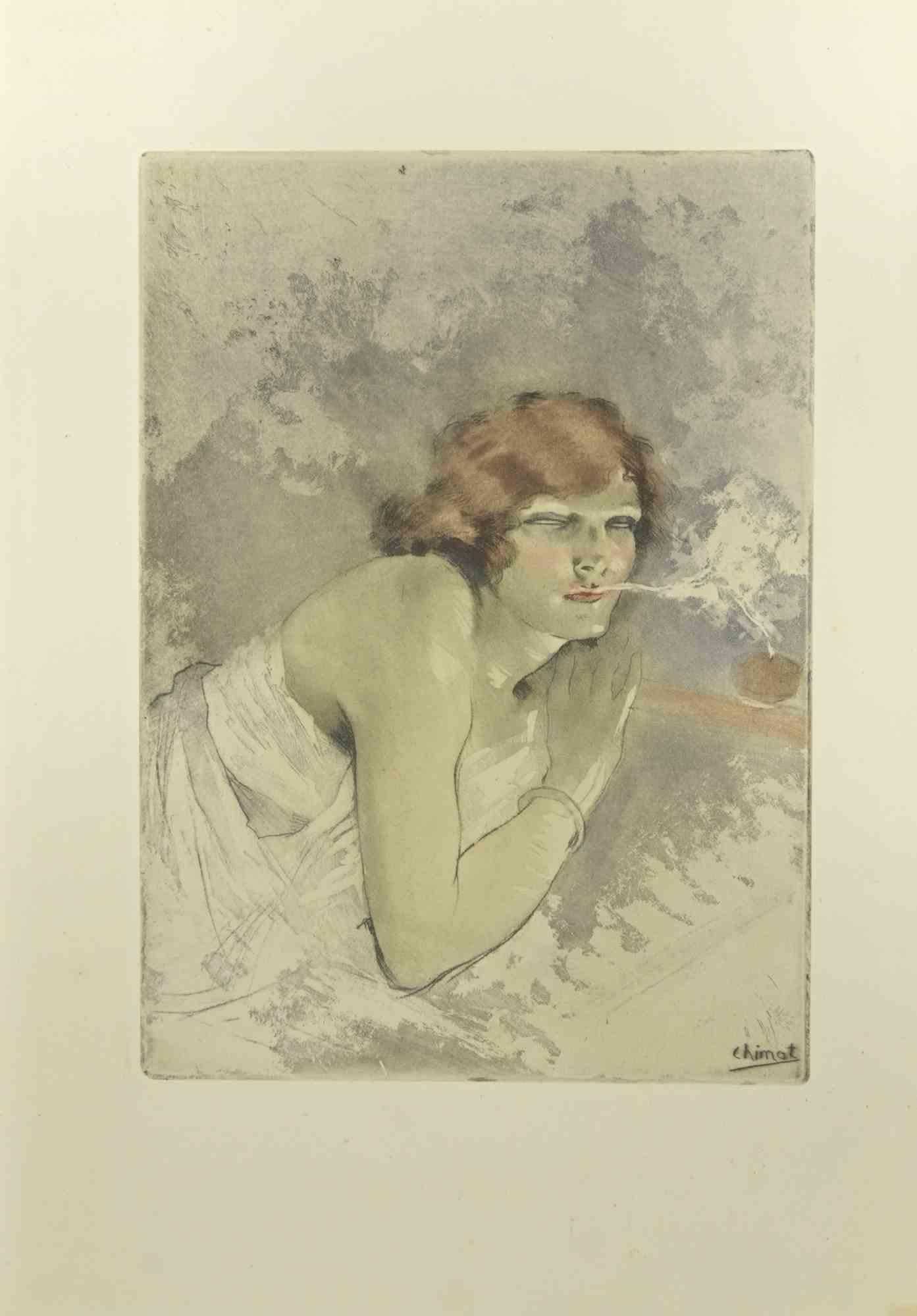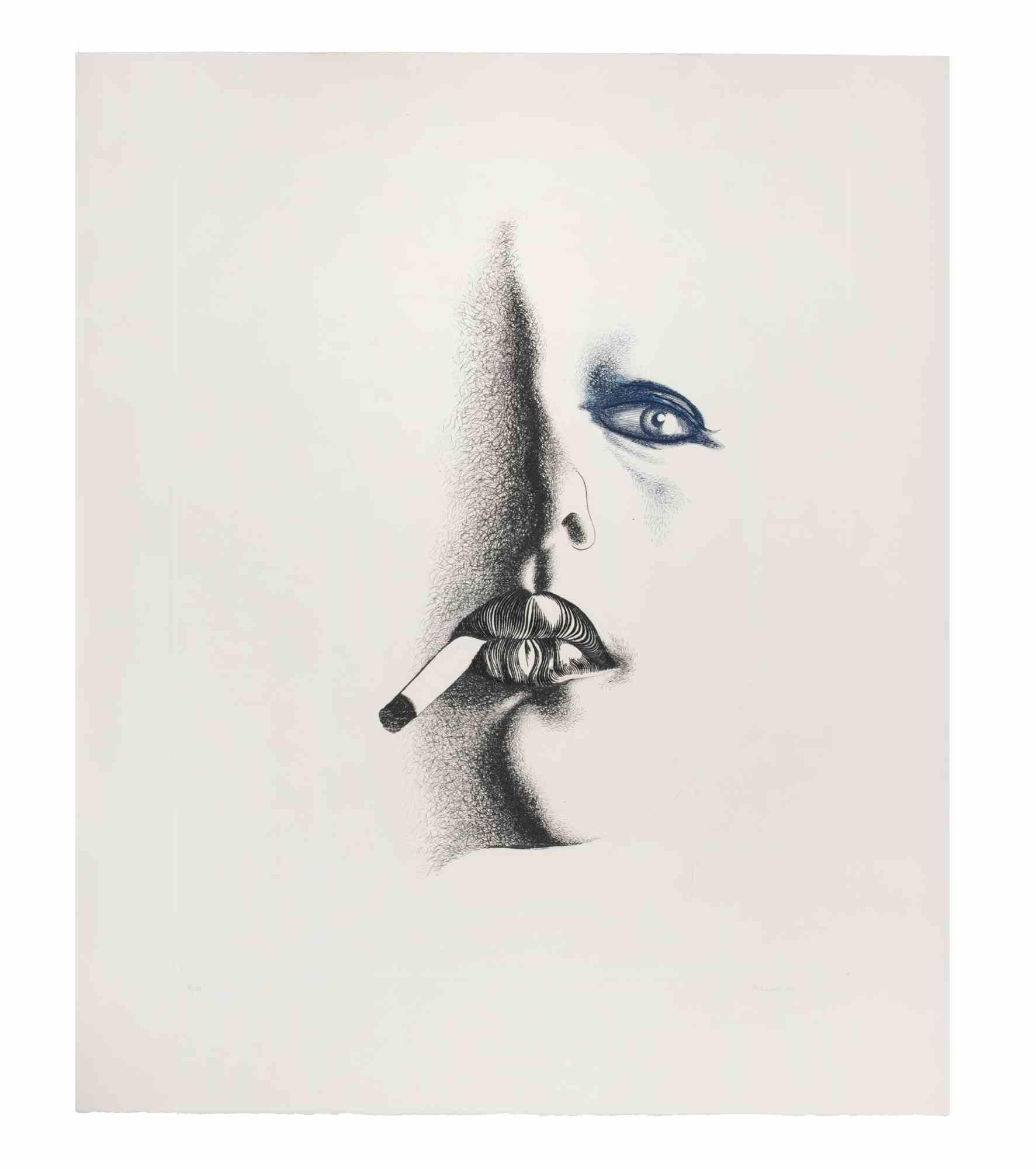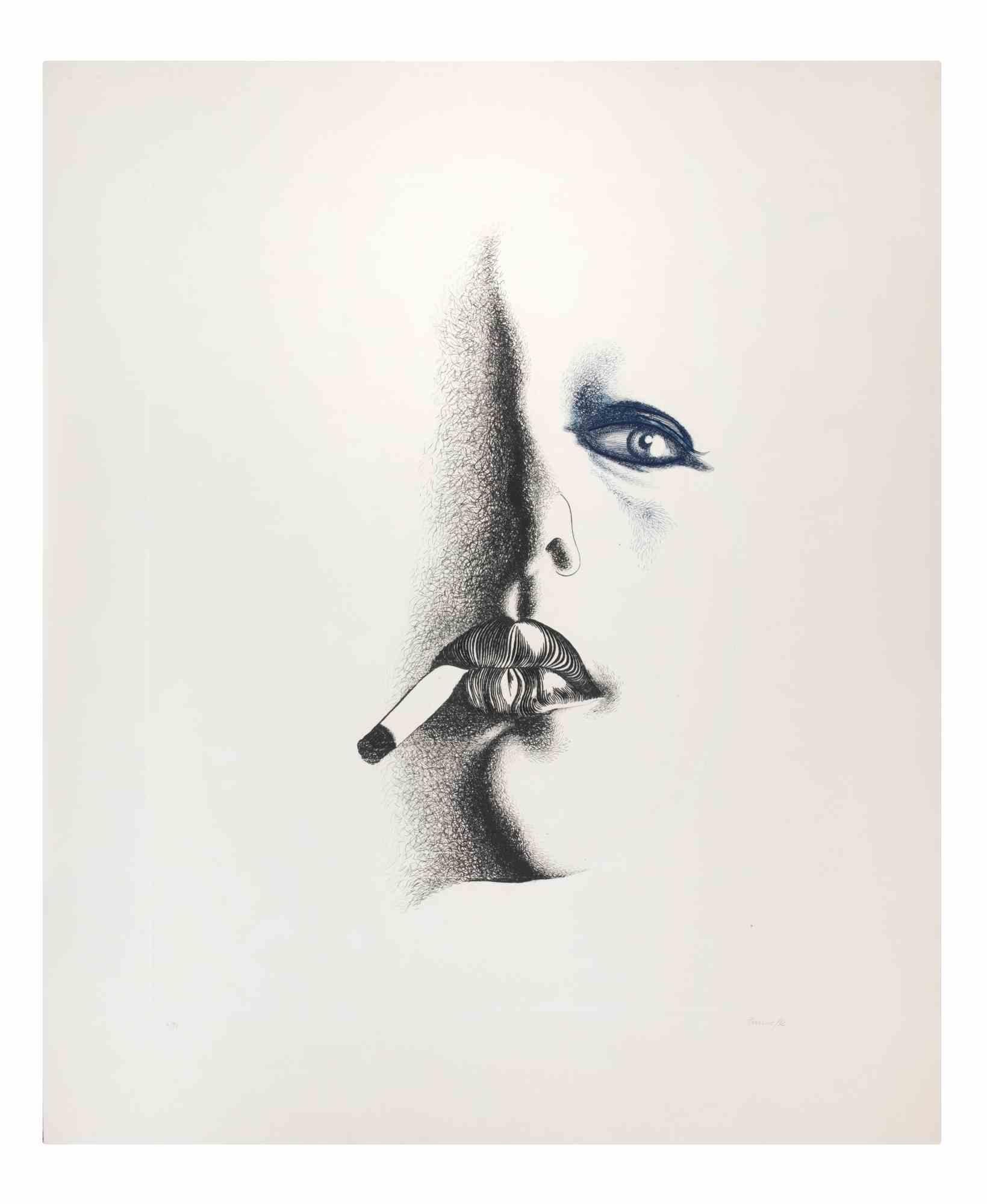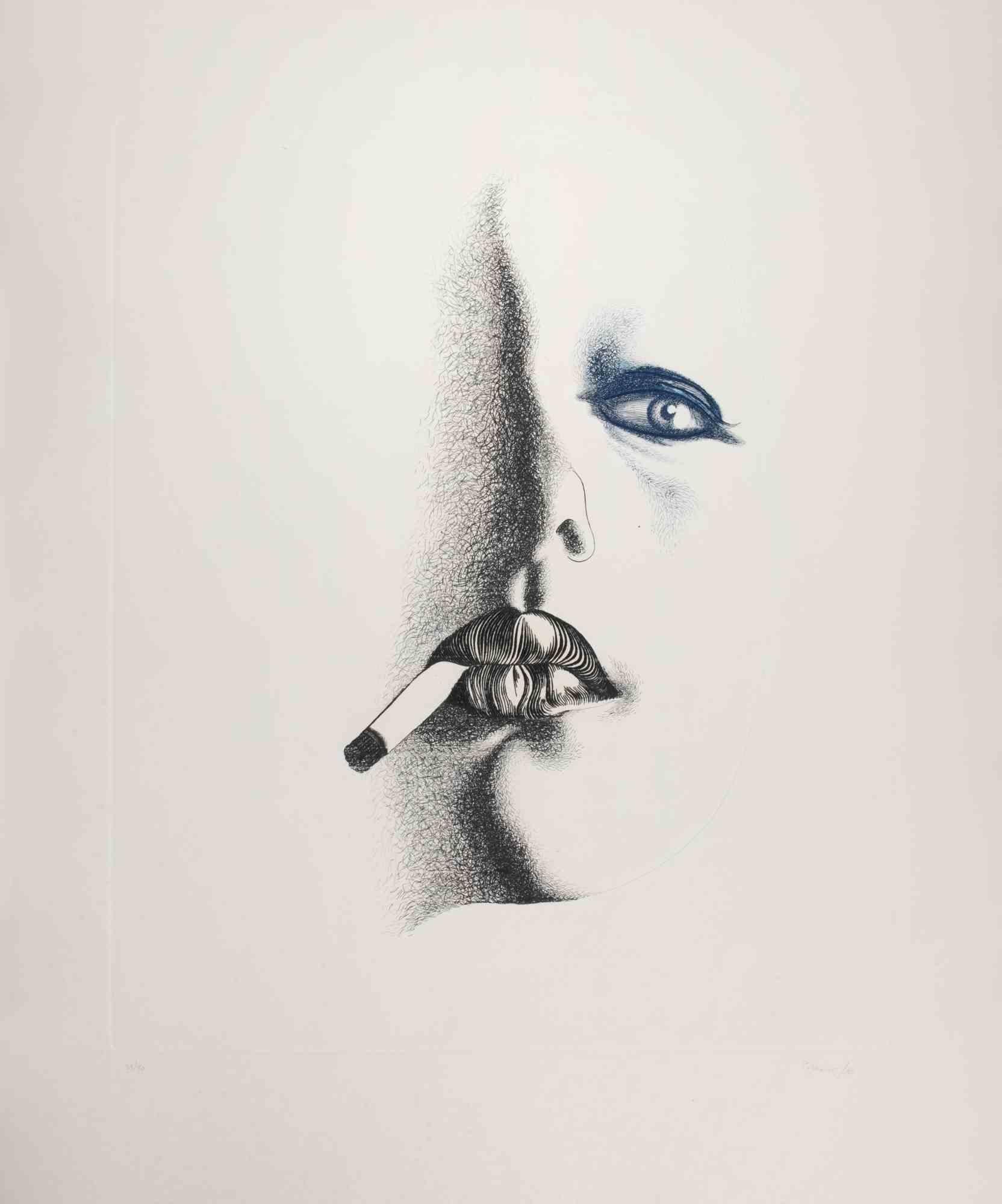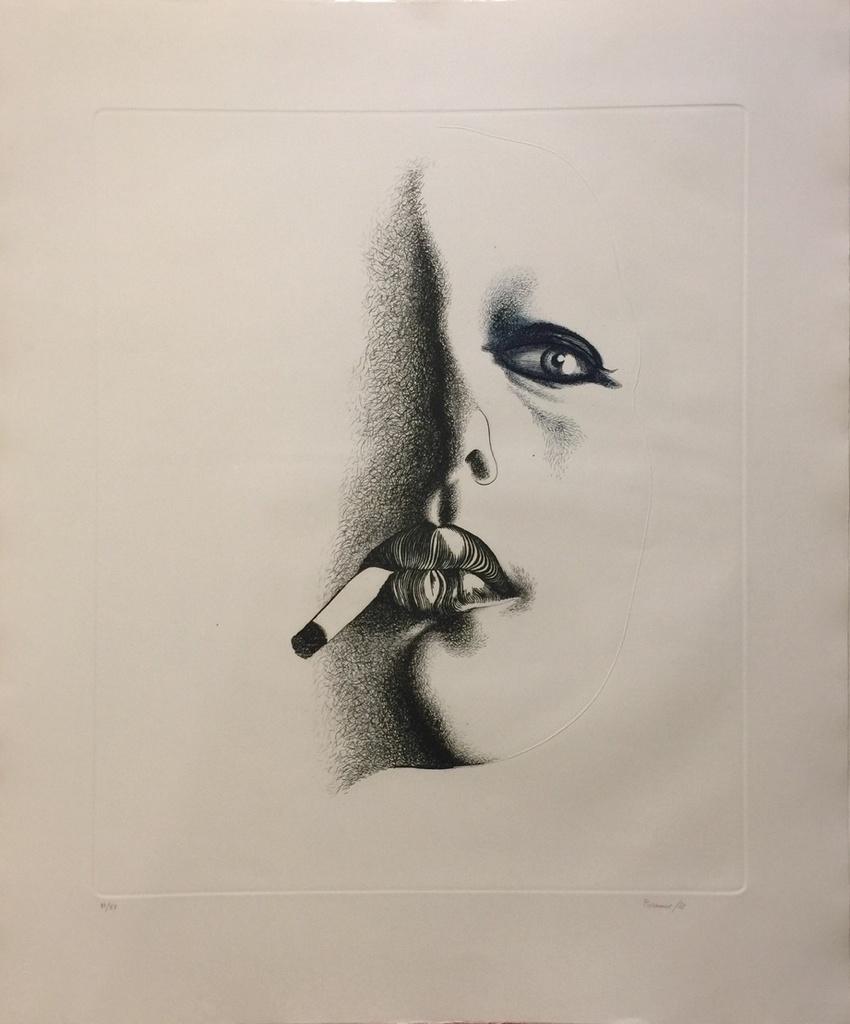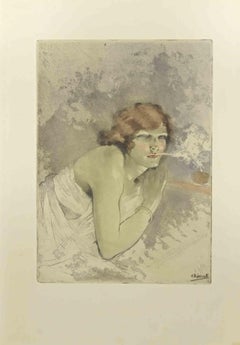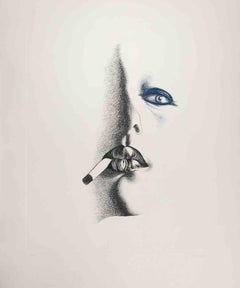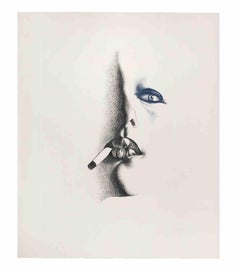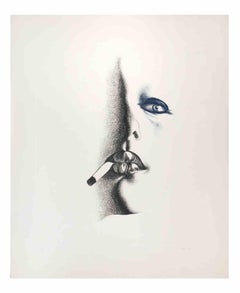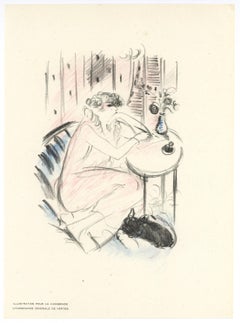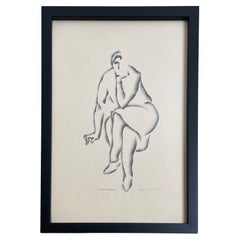Items Similar to The Smoker - Lithograph by Gérarde Cochet - 1929
Want more images or videos?
Request additional images or videos from the seller
1 of 6
Gérarde CochetThe Smoker - Lithograph by Gérarde Cochet - 19291929
1929
$451.06
£340.35
€380
CA$628.67
A$683.38
CHF 358.15
MX$8,317.37
NOK 4,508.30
SEK 4,236.33
DKK 2,894.60
About the Item
The Smoker is a Lithograph realized by Gérarde Cochet (1888-1969).
Hand-signed by the artist on the lower right corner, numbered on the left.
Good condition included a white cardboard passpartout (63.5x50 cm).
Gérard Cochet (13 October 1888, in Avranches – 8 January 1969, in Paris) was a French illustrator.
Born in Avranches, France, he attended the Académie Julian in 1909.
After the First World War he exhibited at the Salon des Indépendants and the Salon d'Automne and was awarded the Prix Blumenthal for engraving in 1924. He was chief of studio at the Academie Ranson from 1932 to 1935 and vice-president of the Jeune Gravure Contemporaine.
He painted murals for the Palais de la Decouverte and designed scenery and costumes for the theatre. He also illustrated several books, including the Fables de La Fontaine, Voltaire's Candide, and Jules Laforgue's Les Moralites Legendaires. His works are on show at the Musée d'Art Moderne de la Ville de Paris as well as other French and foreign museums.
He died in his Paris home in 1969.
- Creator:Gérarde Cochet
- Creation Year:1929
- Dimensions:Height: 19.69 in (50 cm)Width: 14.77 in (37.5 cm)Depth: 0.08 in (2 mm)
- Medium:
- Movement & Style:
- Period:
- Framing:Framing Options Available
- Condition:Insurance may be requested by customers as additional service, contact us for more information.
- Gallery Location:Roma, IT
- Reference Number:Seller: T-1382641stDibs: LU650311920662
About the Seller
4.9
Platinum Seller
Premium sellers with a 4.7+ rating and 24-hour response times
1stDibs seller since 2017
7,776 sales on 1stDibs
Typical response time: 2 hours
- ShippingRetrieving quote...Shipping from: Grasse, France
- Return Policy
Authenticity Guarantee
In the unlikely event there’s an issue with an item’s authenticity, contact us within 1 year for a full refund. DetailsMoney-Back Guarantee
If your item is not as described, is damaged in transit, or does not arrive, contact us within 7 days for a full refund. Details24-Hour Cancellation
You have a 24-hour grace period in which to reconsider your purchase, with no questions asked.Vetted Professional Sellers
Our world-class sellers must adhere to strict standards for service and quality, maintaining the integrity of our listings.Price-Match Guarantee
If you find that a seller listed the same item for a lower price elsewhere, we’ll match it.Trusted Global Delivery
Our best-in-class carrier network provides specialized shipping options worldwide, including custom delivery.More From This Seller
View AllThe Smoking Girl - Etching by Edouard Chimot - 1930s
By Édouard Chimot
Located in Roma, IT
The Smoking Girl is an etching realized by Edouard Chimot in the 1930s.
Signed on the plate by the artist on the lower right corner.
Good conditions.
Édouard Chimot (26 November 1...
Category
1930s Modern Figurative Prints
Materials
Etching
Smoker in White - Etching by Giacomo Porzano - 1972
By Giacomo Porzano
Located in Roma, IT
Hand signed, dated and numbered by artist with pencil. Etching and aquatint.
Edition of 90 prints plus 15 prints in Roman Numbers and 5 Artist's Proofs.
Excellent condition.
Category
1970s Contemporary Figurative Prints
Materials
Etching
$231 Sale Price
35% Off
Smoker in White - Etching by Giacomo Porzano - 1972
By Giacomo Porzano
Located in Roma, IT
Hand signed, dated and numbered by artist with pencil. Etching and aquatint.
Edition of 90 prints plus 15 prints in Roman Numbers and 5 Artist's Proofs.
Excellent condition.
Category
1970s Contemporary Figurative Prints
Materials
Etching
$231 Sale Price
35% Off
Smoker in White - Etching by Giacomo Porzano - 1972
By Giacomo Porzano
Located in Roma, IT
Hand signed, dated and numbered by artist with pencil. Etching and aquatint.
Edition of 90 prints plus 15 prints in Roman Numbers and 5 Artist's Proofs.
Excellent condition.
Category
1970s Contemporary Figurative Prints
Materials
Etching
$231 Sale Price
35% Off
Smoker in White - Original Etching by Giacomo Porzano - 1972
By Giacomo Porzano
Located in Roma, IT
Hand signed, dated and numbered by artist with pencil. Etching and aquatint.
Edition of 90 prints plus 15 prints in Roman Numbers and 5 Artist's Proofs.
Excellent condition.
Category
1970s Contemporary Figurative Prints
Materials
Etching
$231 Sale Price
35% Off
Smoker in White - Etching by Giacomo Porzano - 1972
By Giacomo Porzano
Located in Roma, IT
Hand signed, dated and numbered by artist with pencil. Etching and watercolour
Edition of 90 prints plus 15 prints in Roman Numbers and 5 Artist's Proofs.
Category
1970s Contemporary Figurative Prints
Materials
Etching
$354 Sale Price
35% Off
You May Also Like
The Poet, Young Woman - Lithograph signed in the plate (Leda 1960)
By Amedeo Modigliani
Located in Paris, IDF
Amedeo MODIGLIANI (1884-1920) (after)
The Poet, Young Woman
Lithograph and stencil after a drawing from the artist
Signed in the plate
On Arches vellum 48 x 36 cm (c. 19 x 14,2 in)
...
Category
1910s Modern Portrait Prints
Materials
Lithograph
"Collette la Vagabonde" original lithograph
By Marcel Vertès
Located in Henderson, NV
Medium: original lithograph. Executed by Vertes in 1928 for "Collette la Vagabonde", this impression on laid paper was published by Arts et Metiers Graphiques. Size: 11 3/4 x 8 7/8 i...
Category
1920s Prints and Multiples
Materials
Lithograph
Woman in a Café - Stone lithograph, 1930
Located in Paris, IDF
Maurice BARRAUD
Woman in a Café, 1930
Original stone lithograph
Printed signature in the plate
On Arches vellum 28 x 22 cm (c. 11 x 9 inch)
Excellent...
Category
1930s Modern Figurative Prints
Materials
Lithograph
Figure Study Lithograph by William S. Schwartz
By William S. Schwartz
Located in Pasadena, CA
Charming drawing of a woman sitting and resting her head on her hand. This was done with a technique that provides us with very soft lines, almost airbrush-like. It's simple and precise.
William S...
Category
Mid-20th Century American Prints
Materials
Paper, Wood
$272 Sale Price
71% Off
'The Smoker (Le Fumeur)' original etching by Cornelis-Pietersz Bega
By Cornelis Bega
Located in Milwaukee, WI
'The Smoker (Le Fumeur)' is an original etching by the celebrated Dutch painter and printmaker Cornelis-Pietersz Bega. It presents a genre scene of the type Bega was best known for: Bega's principal subjects were genre representations of taverns, domestic interiors and villages. He depicted nursing mothers, prostitutes, drunks, gamblers and fools such as quack doctors and alchemists. In this case, he shows a man seated on a chair with his foot on a flat stool and holding a smoking pipe. For Bega, this representation was more of a caricature than it was an image of a specific person, and such genre scenes would have held allegorical and symbolic meaning for the seventeenth-century viewer. During the seventeenth century, the Dutch of all levels of society consumed tobacco and alcohol, and these were an important part of the Dutch economy and a major source of wealth. At the same time, however, moralists and ministers sought to curb intoxication: they openly described drinking and smoking as sinful, immoral, and a general threat to one’s reputation. This paradox is reflected in prints such as this, which inherently carry the national pride of the Dutch economy alongside a moral warning in a print that could be just as easily consumed and collected.
2.5 x 2.25 inches, print
12.38 x 10.38 inches, frame
Framed to conservation standards using archival materials including 100 percent rag matting and mounting materials. Housed in a gold finish Spanish-style wood moulding.
Overall good and stable condition; margins cut to plate; some wrinkling in the corners from previous mounting; housed in a new custom frame.
Cornelis Bega was born into prosperous circumstances. His mother, Maria Cornelis, inherited half the estate (gold, silver, paintings, drawings and prints) and all of the red chalk drawings of her father, Cornelis Cornelisz van Haarlem, a renowned Mannerist artist. Bega's father was Pieter Jansz Begijn (d 1648), a gold and silversmith.
Like other family members, Bega was probably Catholic. Houbraken's claim that Bega studied with Adriaen van Ostade is likely to be correct; this was probably before 24 April 1653, when Bega joined Vincent Laurentsz. van der Vinne in Frankfurt for a journey through Germany, Switzerland and France. Bega had returned to Haarlem by 1 September 1654, at which time he joined the Guild of St Luke; he was already a competent draughtsman, as indicated by his first extant dated work, Interior with a Nursing Mother (1652; Frankfurt am Main, Städel. Kstinst.), and by a remarkable double portrait (Amsterdam, Rijksmuseum) drawn by him and Leendert van der Cooghen in 1654.
Bega painted, drew, etched and made counterproofs in a wide variety of materials on different types of small-scale supports. He may have been the first Dutch artist to make monotypes, but this remains controversial. Approximately 160 paintings, 80 drawings and six monotypes by Bega have been catalogued, as well as around 34 etchings.
Bega's principal subjects were genre representations of taverns, domestic interiors and villages. He depicted nursing mothers, prostitutes, drunks, smokers, gamblers and fools such as quack doctors and alchemists. Less common subjects include the ridiculed or pestered woman, as in Two Figures and Mother with a Spirits Bottle (c. 1662; Gouda, Stedel, Museum Catharina Gasthuis) and The Inn (etching), as well as witty satires on traditional scenes of middle-class music-makers, such as the Music Lesson (1663; Paris, Petit Palace).
Bega's early paintings, such as the Weaver's Family (c. 1652; St Petersburg, Hermitage), are freely executed, dark and coarse, recalling the many-figured peasant subjects of van Ostade. Between c. 1660 and 1664 he began to paint genre scenes with fewer figures, which are finely articulated, colourful and psychologically expressive, for example Two Men Singing (1662; Dublin, N.G.). His exquisite, late fijnschilderen ('fine painting') manner, evident in The Alchemist (1663; Malibu, Getty Museum), compares well with that of Gerrit Dou.
As a draughtsman Bega is noted for his single-figure studies, executed mainly in black and white chalk on blue paper or red chalk on white paper. None of the studies, which were drawn naer het leven (from life), seem to relate to a painting or etching. Bega traded drawings or shared models with other artists of the Haarlem school, including van der Cooghen, Gerrit Berckheyde, Dirck Helmbreker and Cornelis Visscher. These artists drew chalk figure studies in a very similar style, characterised by regular and precise parallel shading and well-defined forms; their drawings, especially those of Bega and Berckheyde, have been frequently confused. Unlike the realistic figure studies, Bega's etchings depict interiors with figures or single figures in the manner of van Ostade; the compositions, often with masterful chiaroscuro effects, reflect most closely the paintings of the 1650s.
Bega is likely to have remained in Haarlem, where he paid dues to the Guild in 1661. He probably died from the plague; fees for his expensive funeral at St. Bavo's were paid on 30 August 1664. Among the artists he influenced were Thomas Wijck, Jan Steen, Richard Brakenburg (1650-1702) and Cornelis Dusart. Painters such as R. Oostrzaen ( fl ?1656) and Jacob Toorenvliet...
Category
17th Century Old Masters Figurative Prints
Materials
Paper, Etching
"The opium smoker", Léa Lafugie (1890-1972)
Located in Paris, FR
Léa Lafugie (1890–1972) was a painter who traveled extensively across Asia. She was renowned for her portraits. She studied at the School of Decorative Arts, followed by the École de...
Category
1920s Modern Figurative Drawings and Watercolors
Materials
Watercolor
